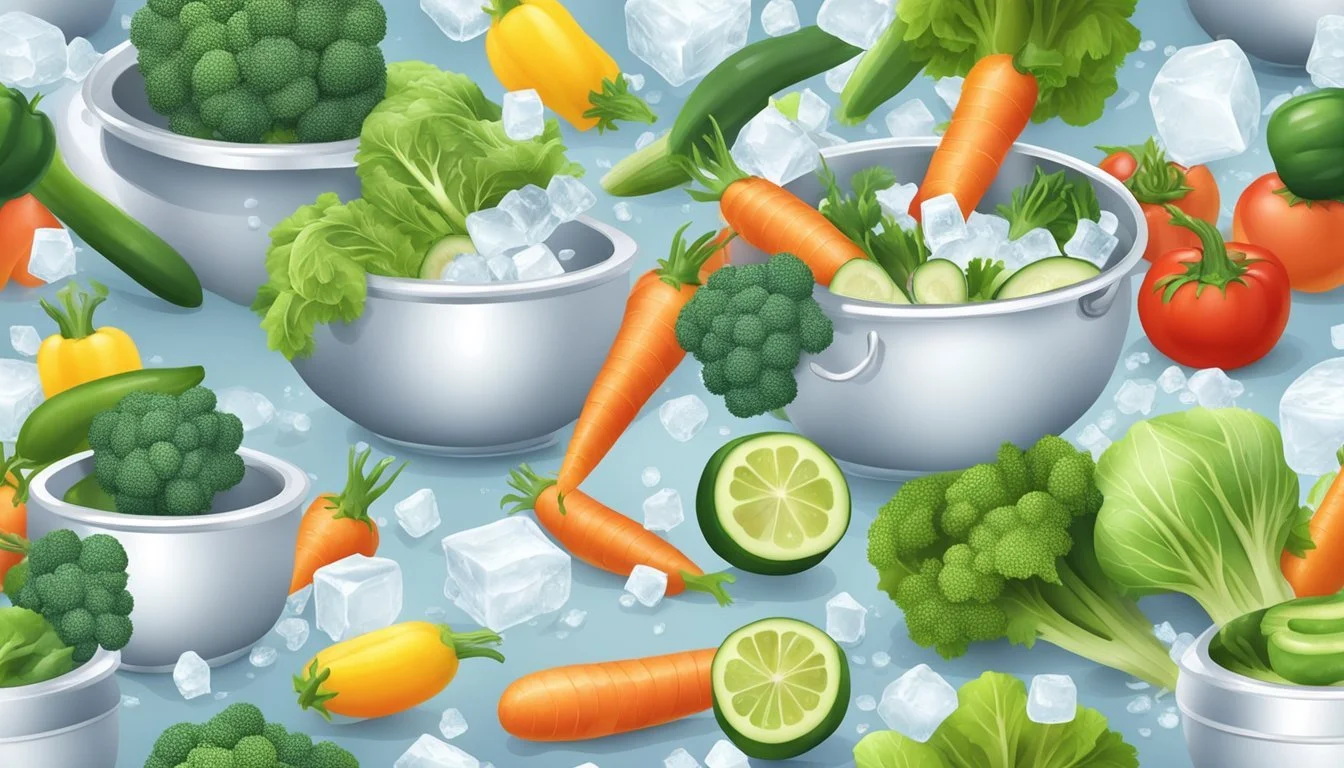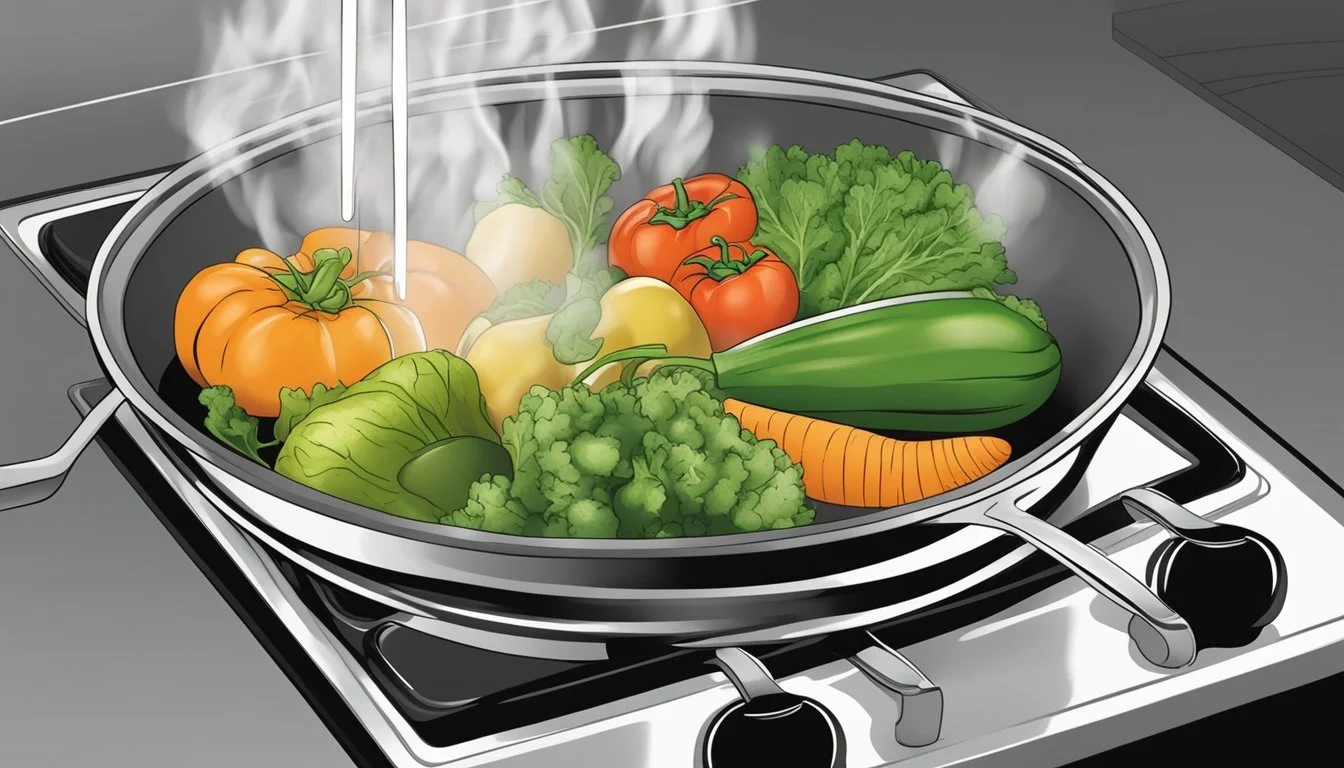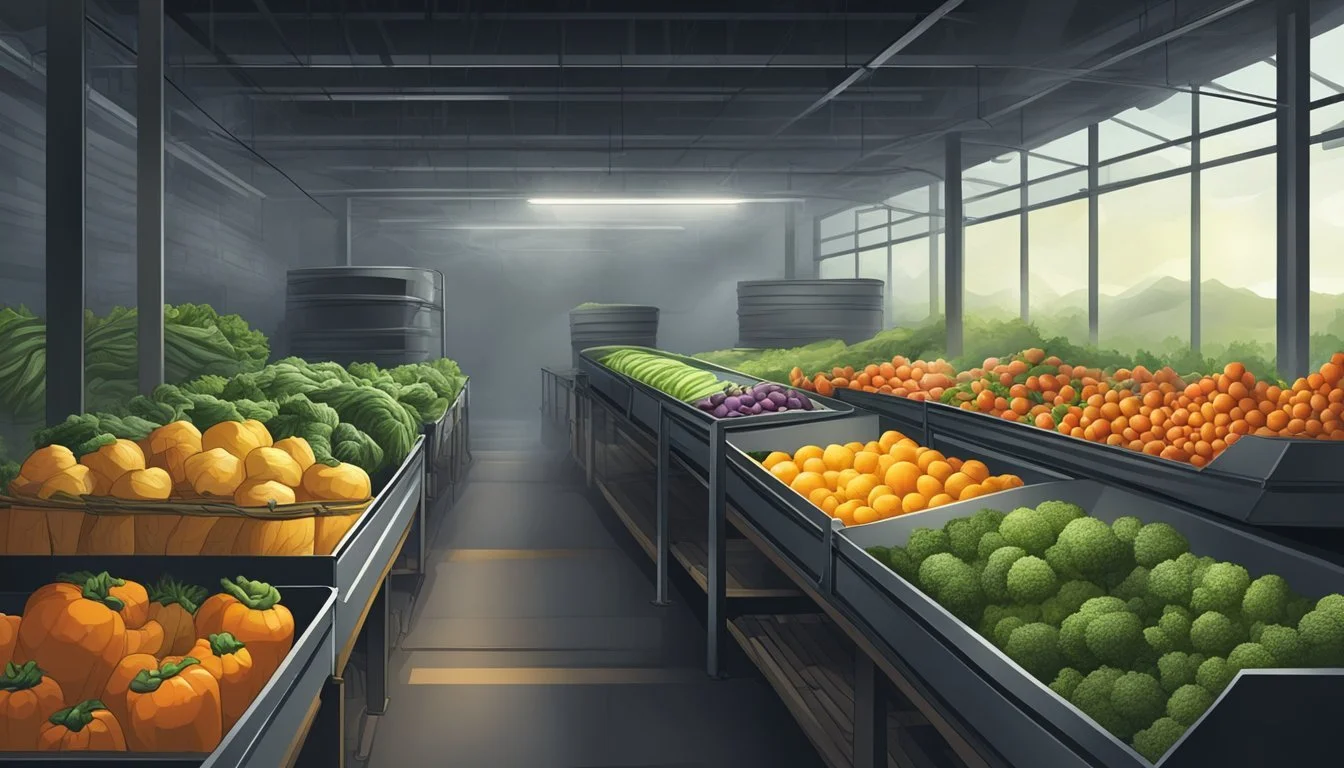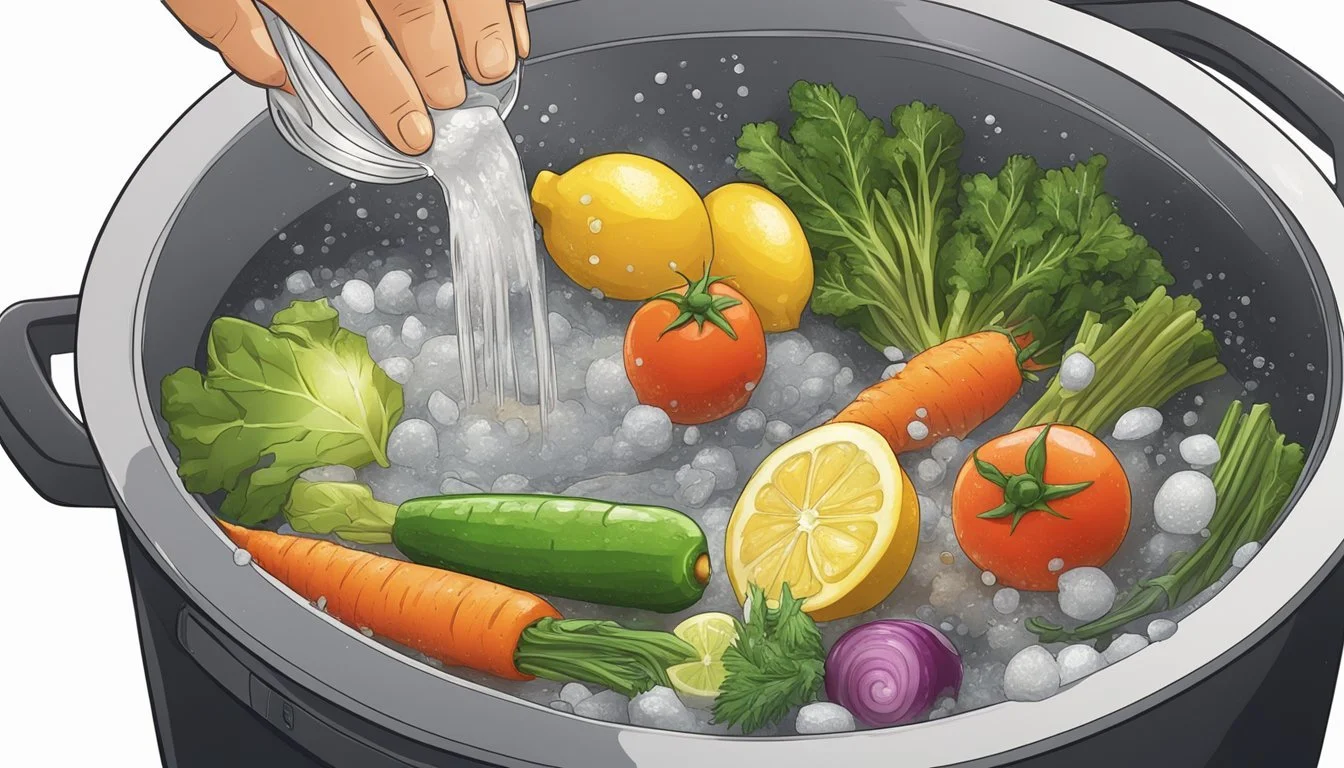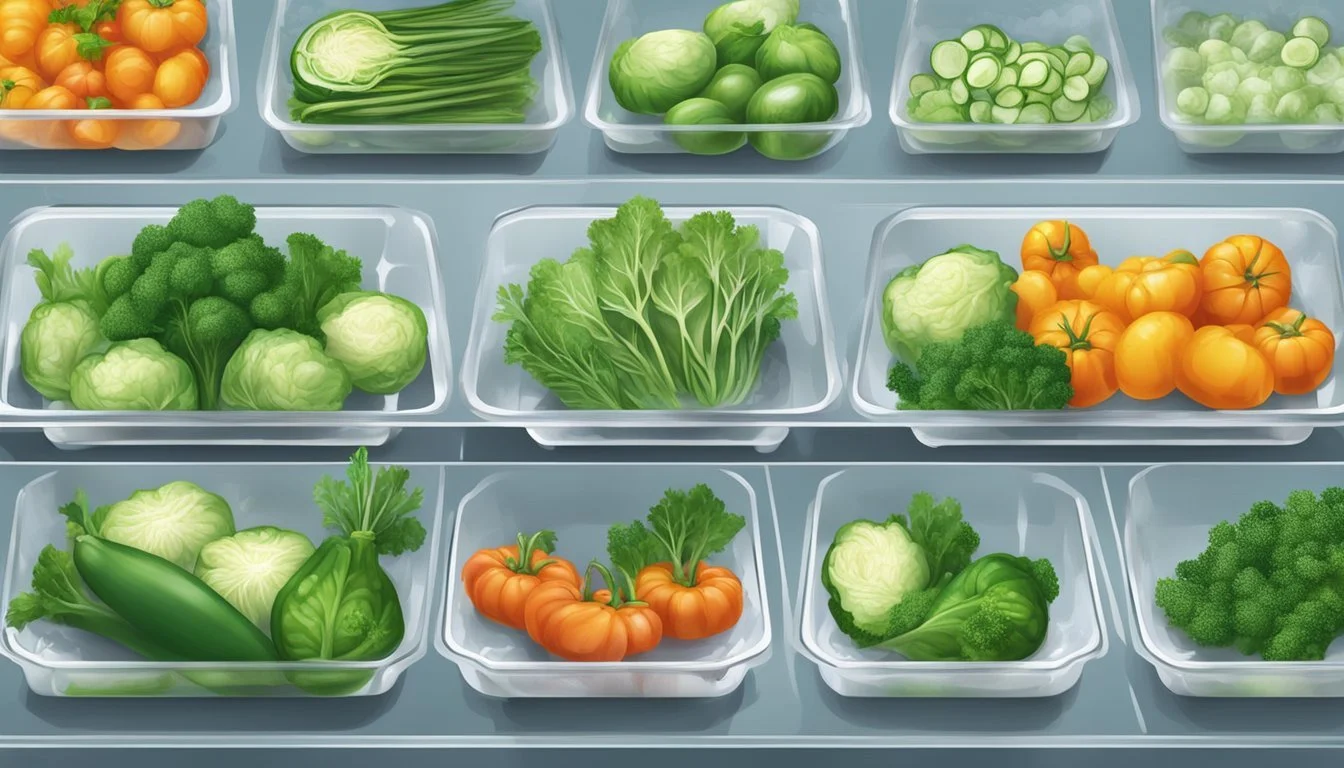Saving Overcooked Vegetables
Tips for Preserving Texture and Nutrition
Cooking vegetables is a balancing act between enhancing flavor and preserving nutrients, but incidents of overcooking can occur, leading to a loss of texture and potential nutrient degradation. While overcooked vegetables may seem destined for the compost bin, there are salvage strategies that can recover some of their culinary appeal. By understanding the science behind nutrient retention and textural changes during various cooking methods, one can make informed decisions in rescuing overcooked vegetables without sacrificing too much of their nutritional value.
Vegetables are rich in a variety of nutrients, such as vitamins, minerals, and antioxidants, which are sensitive to heat, water, and cooking time. Overcooking can result in a mushy texture and diminished nutritional profile. However, it's essential not to discard overcooked vegetables, as they can still contribute to one's daily nutrient intake. Techniques to restore some of their texture and enhance flavor can include mashing for a creamy puree or incorporating them into dishes where their softer texture is an asset, such as soups, casseroles, or sauces.
The key to reviving overcooked vegetables is to utilize them in a manner that complements their altered state. Repurposing them into new culinary creations not only reduces waste but also demonstrates a resourceful approach to cooking. Although the vegetables' optimal texture may have been compromised, they can still offer a satisfactory experience when incorporated thoughtfully into new dishes, ensuring that nutrition and flavor are not completely lost due to a kitchen mishap.
The Impact of Cooking on Vegetable Nutrients
Proper cooking methods can preserve the nutrient content of vegetables, although some methods can lead to significant nutrient losses, particularly of sensitive compounds like vitamins and antioxidants.
Understanding Nutrient Loss
Vegetables are abundant in water-soluble vitamins, such as vitamin C and B vitamins (thiamine, riboflavin, niacin), as well as antioxidants like lycopene and lutein, which are all essential for maintaining good health. However, these nutrients are highly susceptible to degradation through heat and prolonged cooking times. In addition, water-soluble vitamins can leach into cooking water, leading to reduced nutritional value in the vegetables that remain.
Effects of Different Cooking Methods
The method of cooking has a substantial effect on the nutritional quality of vegetables. Some methods are more favorable for retaining nutrients:
Steaming and microwaving result in minimal nutrient losses, as these methods require less cooking time and use little to no water.
Boiling generally causes the most significant nutrient loss, especially of water-soluble vitamins, due to the vegetables being submerged in water.
Frying and sautéing can preserve water-soluble vitamins to some degree but may introduce additional fats.
Roasting and grilling can enhance antioxidant activity and concentration of compounds like lycopene but may also lead to the loss of some vitamins sensitive to dry heat.
The Role of Temperature and Time
Temperature and cooking time directly influence the nutrition of vegetables. Lower temperatures and shorter cooking times help to minimize the oxidation and breakdown of phytochemicals and sensitive nutrients:
Vitamin C is particularly prone to degradation at high temperatures and with longer cooking periods.
Antioxidants and certain minerals maintain their integrity better at lower temperatures.
Cooking for a shorter duration, regardless of method, typically conserves more nutrients and antioxidant activity.
Rescuing Overcooked Vegetables
Overcooked vegetables often suffer from compromised texture, diminished flavor, and potential loss of nutrients. However, there are effective methods to rescue them and make them palatable.
Restoring Texture
When vegetables have been overcooked, they lose their firmness and can become mushy. Although one cannot revert them to their original state, there are creative ways to repurpose them:
Mashing: Transforming vegetables into a smooth mash akin to mashed potatoes is an excellent way to utilize their softness.
Pureeing: Making a soup or a puree allows one to salvage the soft vegetables by blending them with stock or water.
One should avoid attempting to crisp overcooked vegetables as additional cooking will likely exacerbate their mushiness.
Enhancing Flavor
Flavor enhancement is key in offsetting the blandness that can come with overcooking:
Seasoning: Generous seasoning with salt, pepper, and herbs can revive the taste.
Acids: A splash of vinegar or lemon juice can brighten the overall flavor profile.
Fats: Incorporating olive oil or butter can add richness and carry flavors better.
These additions not only improve the taste but can also help in creating a more appetizing appearance.
Promoting Nutrient Retention
Overcooking can lead to a loss of nutrients, but one can take steps to retain the health benefits:
Low Temperatures: Reheating the vegetables at a low temperature can prevent further nutrient degradation.
Pairing: Combining overcooked vegetables with raw salads can offer a balance of nutrients.
By carefully managing the temperature and incorporating fresh elements, one can maintain the healthful qualities of the vegetables.
Preventative Measures and Best Practices
In order to save overcooked vegetables and maintain optimal texture and nutrition, individuals should follow proven cooking techniques, handle and prepare vegetables correctly, and strike a balance between raw and cooked vegetables.
Selected Cooking Techniques
The cooking method chosen greatly influences the preservation of nutrients in vegetables. These methods also play a crucial role in maintaining the desired texture.
Steaming: Ideal for preserving heat-sensitive nutrients like vitamin C and beta-carotene. This method heats vegetables by steam, which minimizes nutrient loss and keeps vegetables closer to their raw state.
Sautéing: Enables quick cooking at moderate temperatures, preserving texture and minimizing nutrient loss. Additionally, it enhances flavor, especially with vegetables like garlic and mushrooms.
Roasting: While it may lead to some nutrient degradation due to higher temperatures, roasting efficiently intensifies flavors, particularly in vegetables like cauliflower, squash, and zucchini.
Blanching: Useful for vegetables such as kale and Swiss chard. It involves brief immersion in boiling water followed by an ice bath, which helps crisp up the cell walls and minimizes nutrient loss.
Proper Handling and Preparation
How vegetables are handled before cooking can affect their nutritional value and the potential for overcooking.
Washing and Cutting: Vegetables should be gently washed and cut into even pieces to ensure uniform cooking. Smaller pieces mean shorter cooking times, reducing the chance of overcooking.
Pre-Cooking Temperature: The food should be brought to room temperature before cooking to avoid the shock of cold vegetables hitting a hot pan, which can lead to uneven texture.
Incorporating Raw and Cooked Veggie Balance
Including both raw and cooked vegetables in one's diet maximizes the nutritional benefit of vegetables, providing a variety of textures and flavors.
Raw Vegetables: They preserve all their fiber content, enzymes, and nutrients that are often lost in the cooking process. However, certain raw vegetables like mushrooms should be cooked to kill potential bacteria.
Cooked Vegetables: While cooking can reduce the levels of some nutrients, it can also increase the absorption of others, such as beta-carotene. A balance between raw and cooked methods brings a variety of nutrients and health benefits to the diet.
Nutritional Enhancement with Complementary Foods
Nutritional enhancement with complementary foods is vital when aiming to maximize the benefits from overcooked vegetables. It involves strategies that can recover or even boost the nutritional value that might be lost during cooking.
Pairing for Increased Nutrient Absorption
Certain combinations of foods can significantly enhance the body's ability to absorb nutrients. For instance, vitamin C found in bell peppers (What wine goes well with bell peppers?) or citrus fruits can improve the absorption of iron from spinach. It is crucial to consider these pairings, especially when dealing with overcooked vegetables, which might have lost some nutritional potency.
Iron Absorption: Vitamin C-rich foods paired with spinach
Calcium and Vitamin D: Broccoli or kale served with dairy to bolster calcium uptake
Leveraging Healthy Fats and Acids
Including healthy fats and acids can aid in the absorption of fat-soluble vitamins and phytochemicals. Olive oil, rich in monounsaturated fats, can enhance the absorption of carotenoids from carrots. Similarly, acids such as vinegar or citrus juice can not only improve the flavor of overcooked vegetables but can also maintain vitamin retention.
Carotenoid Absorption: Carrots or tomatoes with a drizzle of olive oil for better uptake of beta-carotene
Flavonoid Intake: Pair salad with avocado or nuts to maximize antioxidant benefits
Recognizing the Signs of Overcooking
When vegetables are overcooked, they not only lose their vibrant color and firm texture, but their flavor and nutritional value can also be compromised. Detecting the signs of overcooking is essential to salvage the dish and maintain the vegetables’ inherent benefits.
Visual and Textural Cues
Color: Vegetables that have been overcooked typically exhibit dull or faded colors. For example, bright green broccoli may turn to an unappealing grayish-green when overcooked.
Green vegetables (e.g., spinach, kale) lose their vivid green and may turn olive or gray.
White vegetables (e.g., cauliflower, potatoes) can become yellowish and translucent.
Texture: The firmness of vegetables is often replaced with mushiness or limpness when overdone. Overcooked vegetables may also have a less distinct or disintegrating structure.
Crisp vegetables like carrots and green beans soften excessively.
Leafy greens such as spinach may wilt and become too tender.
Impact on Taste and Scent
Flavor: Overcooking can cause a noticeable change in flavor, making vegetables bland or even slightly bitter.
Sweet-tasting vegetables like bell peppers lose their natural sugars and sweetness.
Cruciferous vegetables, such as broccoli and Brussels sprouts, might develop a sulfuric taste.
Scent: Vegetables begin to emit distinctive scents when overcooked. A strong, sometimes unpleasant, odor can be a telltale sign that the vegetables have been cooked for too long.
The fresh, earthy smell of vegetables can turn into an overbearing pungent aroma.
Aromatics like onions and garlic lose their piquancy and can smell acrid when scorched.
Understanding Health Implications
Proper preparation of vegetables is crucial in preserving their nutrient content and minimizing the risk of chronic diseases. Overcooking can undermine both the nutritional value and texture of vegetables, impacting their health benefits.
Link to Chronic Diseases
Overcooking vegetables can lead to a reduction in phytochemicals and certain nutrients known to play a role in the prevention of chronic diseases. Lycopene, a powerful antioxidant found in tomatoes, becomes more available through cooking, but excessive heat might degrade other vital nutrients. Individuals relying on vegetables for their vitamins and antioxidants may experience diminished protection against conditions such as heart disease, cancer, and type 2 diabetes when these nutrients are compromised.
Heart Disease: A high intake of well-prepared vegetables can relate to a lower risk of cardiovascular diseases.
Cancer: Antioxidants and phytochemicals in vegetables may contribute to cancer prevention.
Diabetes: Fiber and essential nutrients in properly cooked vegetables help in maintaining blood sugar levels.
Variation in Nutrient Content
The nutrient content of vegetables, including vitamins, minerals, and antioxidants, varies significantly with cooking methods and duration. B vitamins and vitamin C, for example, are water-soluble and susceptible to heat. They can leach into cooking water or degrade at high temperatures. On the other hand, minerals generally remain stable during the cooking process, but they can also be lost if vegetables are boiled and the cooking water is discarded.
Nutrient Stability during cooking Vitamin C Less stable, can be lost through leaching or overcooking B Vitamins Susceptible to heat and water loss Minerals Relatively stable but can be lost in cooking water Antioxidants Vary; some may degrade with excessive heat
One must balance between adequate cooking to make certain phytochemicals available for absorption and avoiding overcooking that diminishes the nutritional profile of the vegetables.
The Role of Freshness and Storage
Preserving the nutritional quality and texture of vegetables relies heavily on initial selection and proper storage techniques. These factors play a crucial role in ensuring that vegetables such as carrots, broccoli, spinach, and bell peppers retain their health benefits, which include fiber, vitamin A, and folate.
Selection Tips
When choosing vegetables, one should opt for those that appear vibrant and firm, as these attributes often indicate freshness. Fresh vegetables are rich in water-soluble nutrients such as vitamin C and folate, essential for maintaining health. Selecting vegetables with healthy skins and without blemishes can also impact their longevity and quality post-cooking. Foods high in beta-carotene like carrots and bell peppers should have deep, saturated colors, which often signify a higher nutrient content. Integrating healthy fats when consuming these vegetables can facilitate the absorption of vitamin A.
Refrigeration and Preservation
Storing vegetables correctly is key to retaining their cell walls' integrity, which helps preserve texture and flavor after cooking. Upon bringing vegetables home, they should be stored promptly in the refrigerator to slow down the degradation process. The ideal storage for most raw vegetables is in a crisper drawer that maintains a slightly higher humidity level than the rest of the refrigerator, preserving their freshness.
Refrigeration Guidelines for Common Vegetables:
Vegetable Temperature Range Humidity Level Storage Timeframe Carrots 32°F - 40°F (0°C - 4°C) High (95-100% relative humidity) 3-4 weeks Broccoli 32°F - 40°F (0°C - 4°C) High (95-100% relative humidity) 1-2 weeks Spinach 32°F - 40°F (0°C - 4°C) High (95-100% relative humidity) 1 week Bell Peppers 32°F - 40°F (0°C - 4°C) Low (60-70% relative humidity) 1-2 weeks
Refrigeration not only preserves the physical characteristics but also minimizes the loss of water-soluble nutrients like vitamin C and folate, which can leach out when vegetables are left at room temperature for extended periods or during improper cooking methods.
Creative Uses for Overcooked Vegetables
Even when vegetables have lost their desired texture through overcooking, they still hold value in recipes and waste reduction practices, offering both flavor and nutrition.
Repurposing in Recipes
Overcooked vegetables need not go to waste, as they can be creatively incorporated into various recipes. These vegetables can enhance the flavor and dietary fiber content of dishes while still contributing nutritional value.
Soups and Stews: Pureed overcooked vegetables serve as a thickening agent, lending a rich base to soups and stews without compromising on taste.
Vegetable Mash: Similar to making mashed potatoes, overcooked carrots, squash, or even kale can be mashed with seasonings for a comforting side dish.
Fritters or Patties: Mix mashed overcooked vegetables with breadcrumbs and eggs to form fritters or patties, then lightly fry until crispy on the outside.
Casseroles: Chopped overcooked vegetables can be incorporated into casseroles, where their texture is less noticeable amidst grains, cheese, and other ingredients.
Composting and Waste Reduction
Utilizing overcooked vegetables contributes to waste reduction and forms an integral part of sustainable cooking practices.
Home Composting: If the vegetables are not suitable for repurposing in cooking, they can be added to a compost bin, enriching soil with nutrients and promoting a healthier garden.
Animal Feed: Some overcooked vegetables may also be used as feed for pets or farm animals, ensuring that no food goes to waste while contributing to their diet.
In each of these methods, overcooked vegetables are diverted from the landfill, helping to reduce food waste and its associated environmental impact. By recognizing that overcooked vegetables retain essential dietary fibers and nutrients, as suggested by the British Journal of Nutrition, cooks can ensure that the health benefits of these foods are not entirely lost after a cooking mishap. Through these sustainable practices, both flavor and nutrition can be preserved, contributing positively to a balanced diet.
Conclusion
In addressing the challenge of overcooked vegetables, cooks can employ various strategies to preserve nutritional value and enhance texture. While it's undeniable that certain nutrients may be diminished during the cooking process, several nutrients become more bioavailable, such as beta-carotene and lycopene.
Techniques to salvage overcooked vegetables:
Refreshing: Immerse vegetables in ice water to halt cooking and firm up texture.
Reconstructing dishes: Transform them into soups, purees, or sauces to retain flavors and nutrients.
Seasoning adjustments: Incorporate herbs and spices to enhance diminished flavors.
Adopting cooking methods such as steaming, microwaving, or stir-frying can minimize nutrient loss while also preserving the texture and flavor of vegetables. These practices not only contribute to the healthiness of the food but also to the overall dining experience.
In recognizing that overcooking may occur, the key is to be innovative in repurposing vegetables. Through thoughtful techniques, one can ensure that the nutritional and sensory properties of vegetables are not entirely lost. The cook plays a critical role in safeguarding both the healthful qualities and the palatability of their dishes, regardless of culinary missteps.
By understanding the impacts of the cooking process, cooks can confidently navigate the kitchen to deliver nutritious and appealing meals, staying true to the principle that food should be both healthful and enjoyable.


